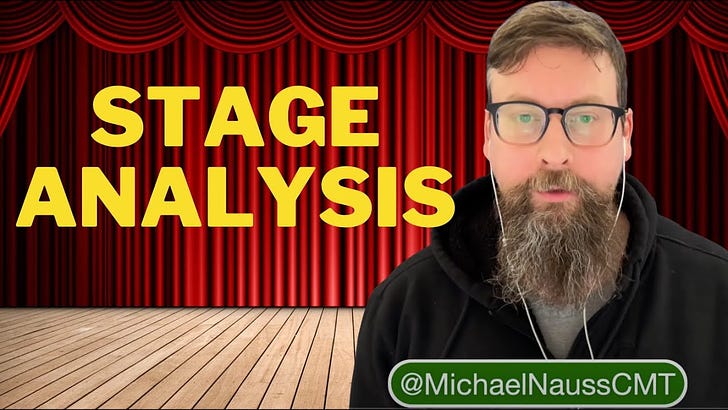Welcome to this edition where we delve into the concept of Stage Analysis, a method popularized by Stan Weinstein for evaluating market movements. This approach categorizes market trends into four distinct stages, offering traders insights on when to engage and when to step back.
Stage 1: Accumulation
In this phase, the market shows little movement, with prices moving sideways. This can be due to a lack of enthusiasm to buy or sell, often after a stock has experienced significant declines. It's characterized by a balance between buyers thinking the price is fair and unwilling to push it higher.
Stage 2: Markup
Here, prices begin to rise, often triggered by a change in fundamentals such as news events or earnings reports. This stage attracts momentum and trend traders, driving up prices as the market sentiment turns bullish.
Stage 3: Distribution
Opposite to accumulation, this phase sees prices peaking as sellers begin to dominate. This stage is marked by increased volatility and trading volume, where each price increase meets resistance, leading to fluctuations at high levels.
Stage 4: Decline
Finally, the market enters a downturn, characterized by falling prices and a pessimistic outlook. In this phase, the previous bullish sentiment reverses, and the focus shifts to short selling and minimizing losses.
Practical Application
For traders, recognizing these stages can substantially influence trading strategies. For instance:
Breakout traders might focus on stocks in Stage 1, anticipating the move to Stage 2.
Trend traders will find Stage 2 and Stage 4 most aligned with their strategies, looking to capitalize on clear upward or downward trends.
To assist traders, I've developed a layout integrating moving averages to help identify these stages visually. This tool can be crucial in selecting stocks aligned with one's trading preferences, whether seeking growth opportunities in Stage 2 or looking for short positions in Stage 4.
Conclusion
Stage Analysis isn't just about identifying where to make a trade but also about knowing when to avoid market participation. By understanding these stages, traders can enhance their market timing, reduce risk, and optimize their trading strategies. For those interested in a more detailed layout or specific trading ideas, feel free to reach out or check the additional resources provided below.
Thank you for subscribing, and as always, happy trading!
Trade-ideas scan: https://www.trade-ideas.com/Cloud.html?code=686fb4e86badd563c974e3c5ececf902







